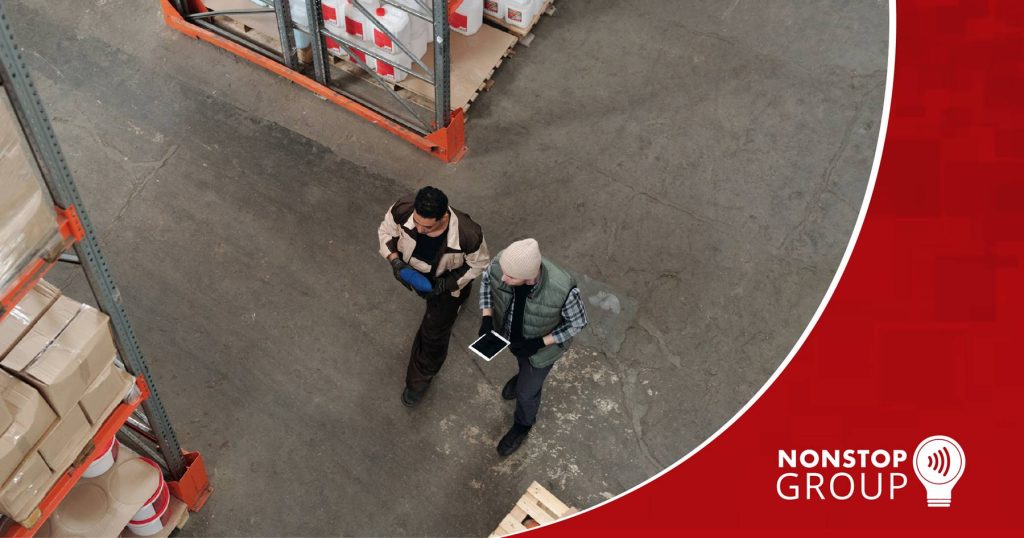6 Min Read
Radio Frequency Identification (or RFID) has, since the early 2000s, formed an essential part of warehouse management, inventory tracking, asset tracking, and inventory management systems overall.
RFID technology has been in use since the Second World War. However, it is only since 1990 that RFID technology has truly increased when the first Ultra High Frequency (UHF) RFID reader was invented. Following Walmart’s heavy investment in RFID tags and RFID technology in 2004, commercial adoption of RFID tags for warehouse management and asset tracking has followed.
As the global economy becomes ever more competitive, an RFID inventory system supported by RFID software can be a potentially revolutionary approach to warehouse management and asset management. Importantly, improving the efficiency of your warehouse inventory systems has plenty of downstream benefits and gives companies a competitive edge. For example, you can improve customer satisfaction with a faster order fulfillment process, see increased revenue, and lower labor and operational costs.
Ultimately, should companies want to remain competitive, improvements in the warehouse management system can deliver impressive results.
What is an RFID System and How Does it Work?
An RFID inventory management system is an inventory management system with RFID technology and RFID software as its backbone. RFID hardware includes RFID readers, RFID scanners, and the RFID label/tag. Of course, an RFID inventory system is substantially different from barcode systems and technology; a comparison between the two will be discussed later!
How exactly does radio frequency identification work? Primarily, RFID works with the use of RFID scanners and tags. An RFID scanner uses radio waves to ‘communicate’ with the microchips inside an RFID tag. With this connection, the scanner can read tag data. This data will include a description of the product and product quantity; both of these details will be displayed on the scanner.

Now, there are several ways RFID systems operate. However, as RFID systems increasingly form part of an overall warehouse management system, we can briefly discuss what such a system looks like in a warehouse environment. This brief discussion will effectively demonstrate how RFID software and technology operate.
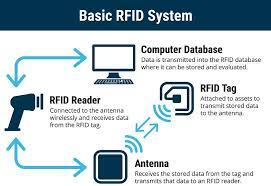

First, employees must place RFID labels on multiple items – such as boxes and pallets (businesses should not label individual items – such as office equipment – with RFID tags). Each RFID label will contain information about the contents in a box and the number of items.
A stationary RFID scanner will then scan boxes with RFID labels as they are placed onto a pallet; once this process is complete, an RFID label will be printed and attached to a pallet with a unique serial number. This data is subsequently recorded onto the central RFID inventory management system, where it can be accessed by inventory managers and employees. Importantly, it is from this centralized system where managers can assess their current inventory levels in real-time.
As the pallets move around the warehouse, RFID readers placed in strategic locations will automatically log and capture (via radio frequency waves) the location of the warehouse inventory to ensure inventory accuracy.
Additionally, once pallets move from one warehouse to another, an RFID warehouse management system will ensure that you have complete inventory visibility for the duration of this process. An RFID warehouse management system will show which pallets are currently moving; once they arrive at their new destination, strategically placed RFID readers will automatically capture the data from the RFID tags placed on boxes and pallets.
Smarter Asset Tracking With NFC Tags
Learn more about how NonStop Suite's NFC Asset Tracking Solution can help your Enterprise streamline operations to new heights.
Get A Free Product Tour
Types of RFID Tags and Readers
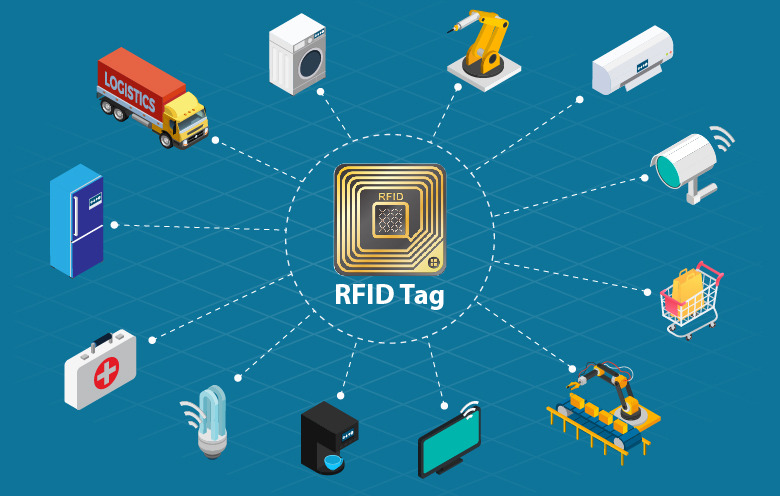
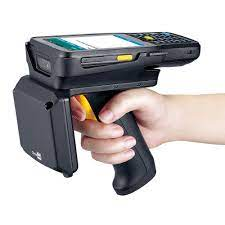
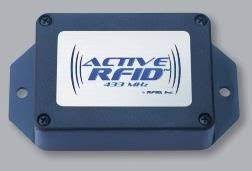
The type of RFID reader or tag that your company purchases are dependent on your particular needs and objectives. Some readers include handheld readers, fixed position passive readers (these will be found in warehouses), active readers, and active RFID Rack/Room locators (these readers work with tags to provide the exact location of inventory in a room).
Powered or Active RFID tags
Powered or active RFID tags have a battery attached to them. This means that these tags can periodically transmit signals even without an RFID reader. However, as these tags are the most expensive (and most reliable), they are usually placed only on the most valuable assets – such as vehicles or valuable medical equipment.
Unpowered or Passive system
Passive or unpowered tags form the backbone of a retailers’ RFID inventory system. These tags remain dormant until the energy from an RFID scanner or reader turns on the tag. Then, the information on the labels will be relayed back to the reader, signifying what the products are and their quantity. As these tags are cheap, they are most often used by the retail industry as they manage large inventory quantities.
Battery Assisted or Semi Passive system
Finally, battery-assisted tags have batteries attached but do not transmit intermittent signals. The battery is needed to turn the tag on when a signal from an RFID scanner is received.
Benefits of Using RFID Inventory Management System
Effortless Compliance
It is no mystery that compliance with state and federal regulations can be a nightmare. Compliance management, however, no longer has to be viewed like this with incident reporting software. Most software solutions will have up-to-date compliance within their workflow. Additionally, EHS incident management software will automatically determine whether any inputted EHS incident data is OSHA reportable. Should EHS incidents be reported to OSHA, incident software can generate the required OSHA logs in seconds.
Stop Incidents Before They Happen
Preventing EHS incidents before they occur is a top priority for most organizations. However, identifying risks and hazards is far more straightforward with incident reporting software. Incident software can spot and detail potential risks in minutes instead of hours or even days.
Additionally, incident software can also be used for root cause analysis when a workplace incident does occur. Root cause analysis is best understood as a methodology for identifying the root causes (or core reasons) of an incident instead of mere contributing or proximate causes. With root cause analysis, you can ensure that your company will identify the most critical causes of incidents or near misses, thereby preventing future incidents before they occur.
No Need to Worry About Liability
Should your organization fail to investigate incidents or near misses in a timely or fair manner, you might be forced to pay fines imposed by regulatory bodies. Your organization will no longer need to worry about liability with incident software, however. Each incident report will contain a detailed timeline of when the incident occurred, the incident type, how it was resolved/reported, and the preventive actions taken to ensure continued safety performance. All of this data will be stored and retrieved effortlessly, thereby minimizing the risk of liability.
Stay Organized And Solve Problems Faster
A crucial feature of incident software is its centralized system of data sharing and management. When an incident does occur, the amount of data required to construct an incident report is substantial. In the absence of a centralized platform, incident reporting will take longer than necessary. With incident reporting software, all your users will have access to the reporting process, meaning that collaboration between departments (often in multiple locations) needed to formulate incident reports is seamless and effortless. Thus, a centralized platform for sharing necessary information can solve incident reporting faster.
Enhanced Productivity
A centralized platform for data-sharing increases employee productivity as vital information can be shared quickly, therefore resolving tasks faster. However, because so much time is saved with a centralized platform, employees can quickly focus on revenue-producing tasks instead of simply spending hours searching for information for accident and incident reporting.
Develop the Relation of Trust with Your Team
Cultivating and developing the trust of your team takes time and a considerable amount of work. One way to ensure continuous improvement in trust development is by instituting a robust health administration/health and safety program at the workplace. When this program is supported by incident reporting software, you can prioritize the safety of the team. Not only does this software make reporting and resolving incidents easier, with such features as root cause analysis, but your team can also be further assured that accidents or personal injury will not occur again.
Drawbacks of Using RFID System
Not Compatible with Cell Phones
RFID labels or tags, unlike barcode labels, cannot be scanned with mobile devices. As mentioned earlier, your company requires a specialized RFID reader for this task. This alone can add significant costs, especially for small and medium-sized retail stores. Should employees need to work in the field, the lack of a backup might become troublesome, too.
Might Add Significant Costs
Implementing an RFID inventory system can introduce high costs for companies; they can be so high that introducing RFID might not be cost-effective at all! As mentioned, there is a litany of RFID equipment that companies must purchase before an RFID system becomes a reality – this includes scanners, tags, and readers. Besides introducing RFID hardware, the costs of introducing RFID software can also be high.
Demand Updates in Infrastructure
RFID software will also need to be introduced when introducing RFID into companies or warehouses. However, RFID software must be compatible with the existing ERP system and user friendly; moreover, businesses must integrate RFID software with their readers/scanners and tags.
Additionally, the entire warehouse will require significant wiring infrastructure to support RFID hardware – especially fixed-position readers, which are especially expensive. In some cases, businesses introducing RFID software will need to overhaul their existing software systems, thereby adding further costs.
Vulnerable
While RFID software and systems are continuously upgraded, both are vulnerable to hacking attacks. For the retail industry, this is especially concerning as tag data can be easily copied by mobile devices to create cloned tags.
Why RFID Tags are a Better Option than Barcode Labels?
Other asset management solutions are still frequently used besides an RFID inventory management system for warehouse management and asset tracking. Among the most commonly used are barcode labels and barcode scanning.
While barcode labels remain reliable for many industries, RFID tags have significant advantages over barcode scanning and labels. For a start, barcode scanners require a line of sight to scan, whereas RFID does not require one due to radio frequency waves.
Because of this, barcode labels are scanned very slowly; by contrast, multiple RFID labels can be scanned at once, thereby streamlining inventory management significantly. Additionally, locating products with RFID is far quicker than using barcode technology. As a result, the order fulfillment process is far quicker, which will leave your customers feeling very happy!
Finally, RFID tags and labels are more durable and long-lasting than barcode labels, which tend to be easily damaged and problematic to read if dirty or greasy.
Wrapping Up!
Should your company wish to implement RFID software or an RFID management system, you should consult with the NonStop Group.
The NonStop Group has a wealth of experience helping clients in the manufacturing, logistics, transportation, and oil & gas industries. When the NonStop Group has helped their clients, equipment downtime is reduced, and business operations are efficiently streamlined due to the introduction of sophisticated work management systems.
Should you want these results for your company, contact the NonStop Group today!


